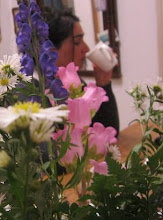Mercator Globes
Online Exhibit - Harvard Map Collection
Among the treasures in the Harvard Map Collection are two globes produced by Gerard Mercator. His terrestrial and celestial globes (1541 and 1551 respectively) were sold as a pair and became popular throughout Europe. Mercator's globes mark the transition as globes changed from an expensive decoration, made only for the learned, to a commercial product available to a wider diversity of users.
Images from the terrestrial globe :
Mercator's globes consist of flat paper engravings consisting of twelve paper gores that narrow at the poles and two calottes (circular caps that cover the poles). The globes were then hand colored and set into innovative four-legged stands with attached horizon rings. While it is believed that he manufactured several hundred of these globes, a recent census reveals that only twenty-two matched pairs survive and Harvard's are the only matched pair in America.
Gerard Mercator (1512-1594) is best known for the first use, in 1569, of the map projection bearing his name. This was the first projection on which any given compass bearing could be plotted as a straight line, thereby greatly aiding navigation at sea. Mercator was a prolific publisher of maps and atlases, but he is only known to have produced one version of a globe pair: a terrestrial globe in 1541 and a matching celestial globe in 1551.Surviving examples of the Mercator globes are rare, and the pair at the Harvard Map Collection are the only known matched pair in America.
Images from celestial globe:












No comments:
Post a Comment